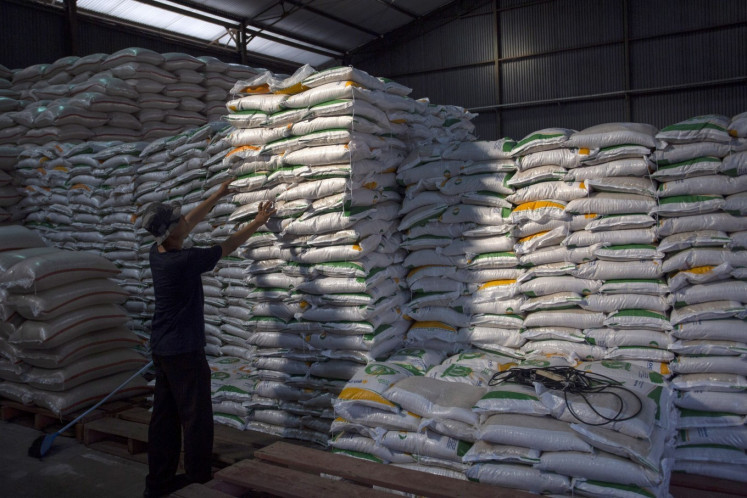Popular Reads
Top Results
Can't find what you're looking for?
View all search resultsPopular Reads
Top Results
Can't find what you're looking for?
View all search results‘Kain kerek’: The art that runs in the family
Bright-colored kain kerek is traditionally worn by young and unmarried people
Change text size
Gift Premium Articles
to Anyone
Bright-colored kain kerek is traditionally worn by young and unmarried people. (JP/Emir Prasetyo)
In Kerek, East Java, families weave and paint their batik.
Indonesia is famous for its traditional craft of batik making. Crafting batik is a labor intensive process, which requires skill and attention to detail. It is an art form and a tradition that has been passed from generation to generation and is recognized as a part of the world’s heritage. Just like any other form of art; batik tells a lot about its maker, and where it is from.
The Museum of Textiles in Jakarta has opened its first exhibition of the year, “Kain Kerek Warisan Leluhur” (Kerek Fabrics, The Heritage), which showcases more than 70 pieces of classic fabrics from the Kerek district in Tuban, East Java.
Benny Gratha, an assistant curator for the exhibition, said Kerek is the last remaining place in Java where batik is made entirely by hand.
“Back then, each village had their own signature patterns,” said Benny. However, since the economy and has improved, people have become more mobile so it is now hard to credit a pattern to a particular village.
Rens Heringa, the curator, says that what sets Kerek fabrics apart from other batiks is the fact that the crafting process is kept traditional despite the increasing industrialization of batik-making.
From cloth-weaving to the painting of patterns, the making of Kerek fabric is a collaborative process which is normally divided between the two genders. Women normally draw the patterns and weave the fabrics while men dye them. This collaborative process is normally shared among members of the same village.
Among the women, the process usually involves three generations of a family.
“Picking the seeds from freshly harvested cotton and weaving the fabric is the job of the older generation [grandmothers], while the making of colored fabrics and the making of the batik pattern is the job of the middle generation [mothers]. The younger generation [daughters] helps the older generation and learn about the process, so they can take on the job when they’re old enough” said Benny.
The batik motifs also signify status in the region.
“In Kerek, you can identify a person’s status by the type of batik they wear”, said Benny. This social status is categorized by the possession of land that is inherited from father to son.
The upper tier of society is comprised of the bakalan, men who own land inherited from their fathers. Village leaders usually come from this category. Paddy field owners are seen as part of the social elite. Dry field (tegalan) owners are the middle class. At the bottom are the numpang class who own no productive farming land, some may own a house and a yard while some work as farmers.
Then there is another group in the social order called the kalang, who are not involved in the land sharing system, they live in the villages but the men often work in the forest or away from the village, while the women stay at home and weave a type of fabric known as butha.
These social orders are represented visibly in Kerek through the type of kain kerek they wear. Each style of batik represents a different group in the social order. Lurik talenan is used and produced by the bakalan class while lurik kembangan is done so by dry-field owners. The ordinary lurik are worn by those of the numpang while batik lurik is customary among the kalang.
In Kerek there are five main villages that produce batik; four of them are located on the cardinal points while the fifth is in the middle. Each village makes a certain contribution and the complete process is pictured as a life cycle.
The writers are interns at The Jakarta Post.










